General Motors Death Watch 177: The World is Not Enough

According to perceived wisdom, GM's overseas ops will keep the corporate mothership afloat. Some 64 percent of first quarter sales came from outside our borders, as well as ALL of GM’s profits. The General claims that foreign markets will account for 75 percent of its profit by decade’s end. So why not just shut down the NA operations and firewall the rest as “Global Motors?” A closer look at GM’s three international units tells the tale.
GME (Europe) covers the EU15 countries, Eastern Europe and Russia. There might as well be a reverse iron (lead?) curtain when it comes to GM’s sales growth and market share in Europe; it’s all happening on the eastern side.
GM’s woes in Western Europe closely mirror its death-rattle in the US. In fact, Opel/Vauxhall has pulled off a perfect imitation of GM’s US market share free-fall: a 30 percent share drop from 1995 to 2007. Opel’s market share has plummeted 55 by percent in its German home base. The Astra, the perennial number two behind VW’s Golf, now struggles for fourth or fifth place.
GME reported a loss of $514m in 2007, despite “strong demand for GM [Chevy-badged Daewoos] vehicles in Ukraine, Greece and Russia, where sales doubled”. But GM’s recent losing bid (to Renault) for Russian automaker Autovaz puts a crimp on future growth. And Toyota has just opened a modern plant in St. Petersburg.
But GM is throwing €9b at Opel, hoping (once again) that new models will turn things around. Opel’s brand image has morphed from boringly reliable to reliably boring, It’s caught in the pincers of the “premium” brands above it and discount brands below.
Thanks to Latin America’s bubbly economy, GM’s bright spot (for the moment) is GMLAAM (Latin America, Africa and Middle East). But dark clouds are already on the horizon (Argentina’s inflation is up to 25 percent again).
Brazil is GM’s third largest market. Because of numerous constrictions on the market, it has all the symptoms of a seller’s market bubble. Chevrolet’s Vectra (Cobalt) goes for $48k. No wonder GMLAAM booked a $1.3 billion profit in 2007.
But the Latin fiesta won’t last (it never does). Growth is slowing, and the competition is moving in. Toyota sees a 50 percent rise in sales. Hyundai is building a plant. And two Chinese firms are setting up shop in low-cost Uruguay to export to Brazil and Argentina.
That brings us to GMAP (Australia-Pacific). GM’s Australian Death Watch has been well documented here. But then there’s China, and as we all know, when it comes to car sales growth the East Glows. Or not.
GM has minted serious coin on their Buicks; $65k for each Park Avenue sedan. But GM’s China-fest is petering out. GM’s current growth is stalled at 7.4 percent. Meanwhile, the competition racks up big gains: Toyota: 62 percent, VW: 33 percent, Hyundai: 64 percent. Chinese drivers are shunning the aging Buick Excelle (Daewoo) in favor of Toyota’s Camry. But GM has a plan! Rushing our unloved (and now unbuilt) Enclaves and Escalades to China.
China’s most explosive period of growth is over, forever. The stock market is down 40 percent, and the real estate bubble has popped. As the car market turns into a buyer’s market, Chinese consumers will have greater choice in cost, quality, economy and reliability. And this is where GM faces a huge downside, not only in China, but in every other gold-rush market around the globe.
GM’s developing world cars are almost exclusively from Daewoo. Aveo’s US EPA numbers are 26 percent worse than the Yaris, and in China, it’s down 47 percent against a Lifan or BYD. Auto analyst, Jia Xinguang, says that “the Toyota Vios (Aygo) and Yaris will soon snap up a large share and dominate the small car niche”. Sounds familiar, once again.
In the hot global CUV market, the Chevrolet Captiva/Saturn Vue from Daewoo is uncompetitive. It weighs 4325lbs and has an EPA rating of 16/22, compared to 3500lbs for a Honda CRV with 20/26 EPA rating.
GM’s losses in Australia and the increasingly competitive market in China are showing up in the earnings statements. Whereas GMAP booked a $1.2b profit in 2006, in 2007 that shrank to $744m.
GM’s global expansion and profits were the result of two decisions made decades ago: to hang on to its roller-coaster Brazil operations, and to be an early pioneer in China. When these two are/were on the upswing, GM enjoyed oversized profits due to an imbalance in supply and demand. But as these and other hot-spot markets mature, GM will face the same final exam that it does at home: are its sub-compact (Aveo) and compact (Cobalt, Astra, etc.) products truly competitive with the best in the world?
GM may not have jumped the overseas shark yet, but it’s on the ramp.

More by Paul Niedermeyer
Latest Car Reviews
Read moreLatest Product Reviews
Read moreRecent Comments
- Kjhkjlhkjhkljh kljhjkhjklhkjh Pay money to be inundated in Adverts for a car that breaks when you sneeze? no
- Laflamcs My wife got a new 500 Turbo in 2015. Black exterior with an incredible red leather interior and a stick! The glass sunroof was epic and it was just about the whole roof that seemed to roll back. Anyway, that little bugger was an absolute blast to drive. Loved being run hard and shifted fast. Despite its small exterior dimensions, one could pile a lot into it. She remember stocking up at COSTCO one time when a passerby in the parking lot looked at her full cart and asked "Will it all fit?" It did. We had wonderful times with that car and many travels. It was reliable in the years we owned it and had TONS of character lacking in most "sporty" car. Loved the Italian handling, steering, and shift action. We had to trade it in after our daughter came along in 2018 (too small for 3 vacationers). She traded it in for a Jeep Renegade Latitude 6 speed, in which we can still feel a bit of that Italian heritage in the aforementioned driving qualities. IIRC, the engine in this Abarth is the same as in our Renegade. We still talk about that little 500..........
- Rochester If I could actually afford an Aston Martin, I would absolutely consider living in an Aston themed condo.
- Redapple2 I ve slept on it. I would take one on a 3 yr lease for $199/mo- ($1000 down total). Evil gm Vampire gave me this deal in 2012.
- 3SpeedAutomatic Would prefer a non-turbo with a stick shift. That would be more fun to drive!!🚗🚗🚗Also, I could teach my nieces and nephews to drive a standard. You'd be surprised how many folks can't handle a stick shift today. Yet, in Europe, most rental cars come with a stick unless you specify otherwise.



















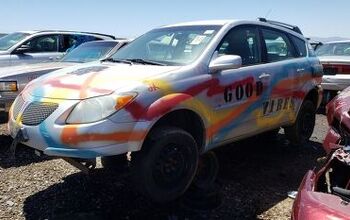





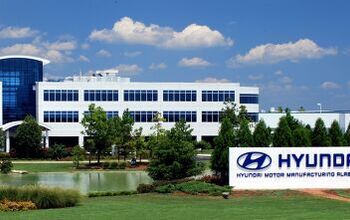




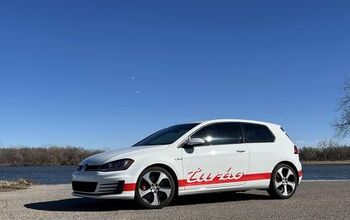
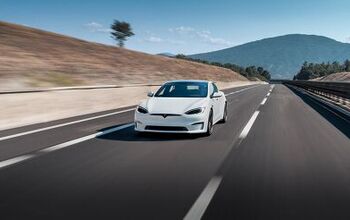
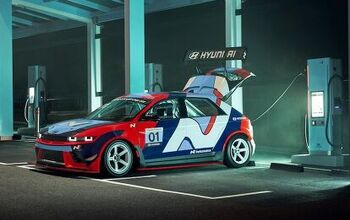
Comments
Join the conversation